Transmission and absorption graphs for photographic filters
|
Using standard techniques I can measure absorption and transmission spectra of the available photographic filters on a spectrometer, such as Prekin Elmer Lambda-900. The spectra are shown below. The graphs show objective information about filters.
There is a remaining question of the interpretation of the data shown. What exactly is needed from the filters? Whatever filter does outside of the transparency of the lens is irrelevant. Therefore the first graph shows a typical transmission of a lens, particularly of the Canon EF 50 mm f1.4. The wavelengths shorter than 360 nm are not transparent for the lens (and also the sensor is not sensitive to them), and hence whatever filter is doing at those wavelengths is irrelevant. 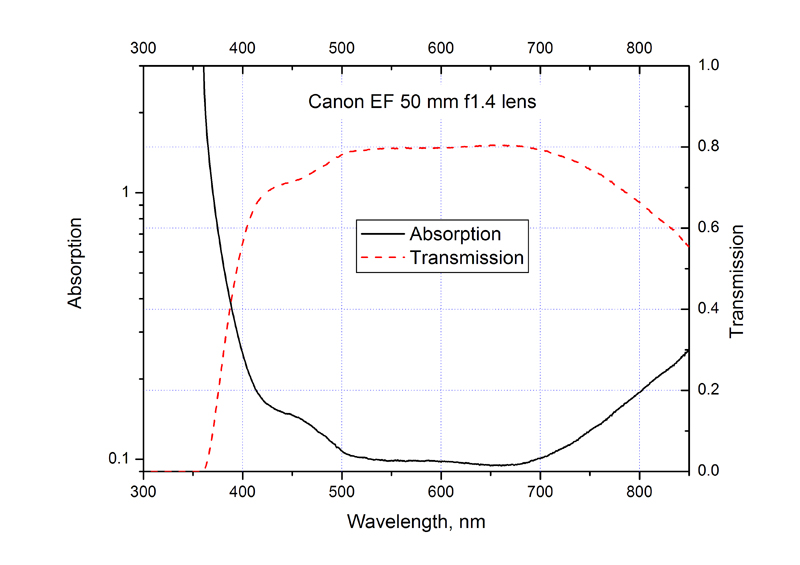 Considering only UV filters, one would like to have the short wavelengths (UV) blocked and longer, visible wavelengths transmitted. The transmission should be constant, with slope of zero for the visible wavelengths to avoid any possible color cast. Note that none of the measured filters provides this feature. It is also uncertain whether the abrupt or smooth cut-off of the UV wavelengths is desirable.
Considering only UV filters, one would like to have the short wavelengths (UV) blocked and longer, visible wavelengths transmitted. The transmission should be constant, with slope of zero for the visible wavelengths to avoid any possible color cast. Note that none of the measured filters provides this feature. It is also uncertain whether the abrupt or smooth cut-off of the UV wavelengths is desirable.Note that the vertical orange dashed line shows cut-off wavelength, 360 nm, below which the lens is not transparent. Note also that Hoya UV 72 mm filter, Canon UV+Haze 58mm filter, Japan Optics Crystal Optics UV, 67mm filter, and Tiffen Wide Angle UVP, 67mm filter are made quite similar, perhaps from the same material. 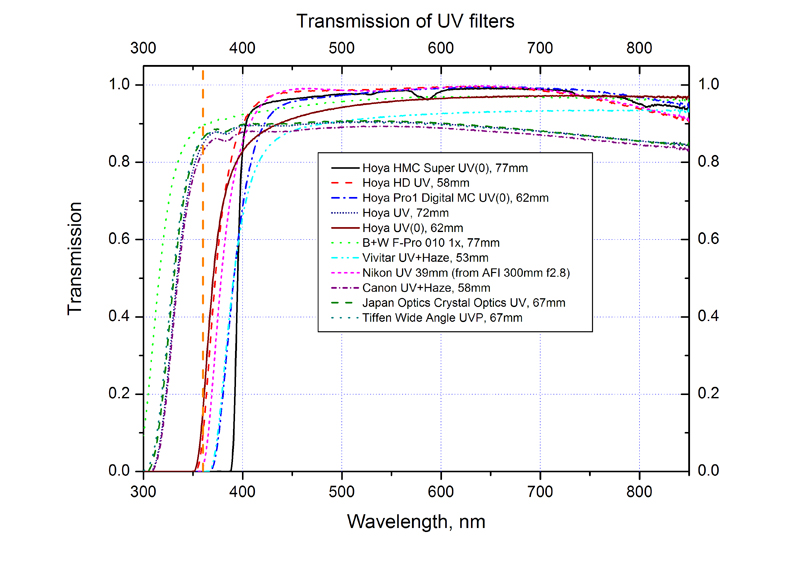
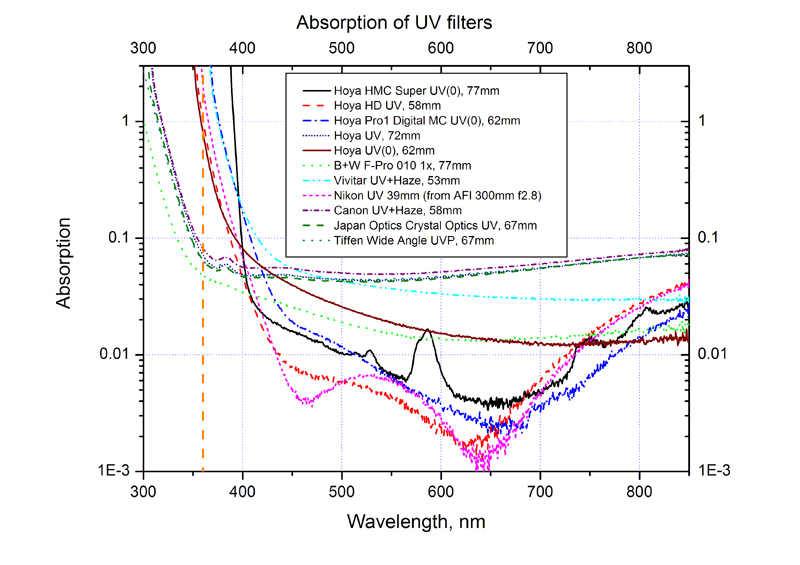
HOYA
Hoya HMC Super UV(0), 77mm Hoya HD UV, 58mm Hoya Pro1 Digital MC UV(0), 62mm Hoya UV, 72mm Hoya UV(0), 62mm B+W B+W F-Pro 010 1x, 77mm VIVITAR Vivitar UV+Haze, 53mm NIKON Nikon UV 39mm (from AFI 300mm f2.8) CANON Canon UV+Haze 58mm Japan Optics Japan Optics Crystal Optics UV, 67mm Tiffen Tiffen Wide Angle UVP, 67mm Color corecting filters are made to alter the color of subjects. They absorb at some wavelengths more than at the others. 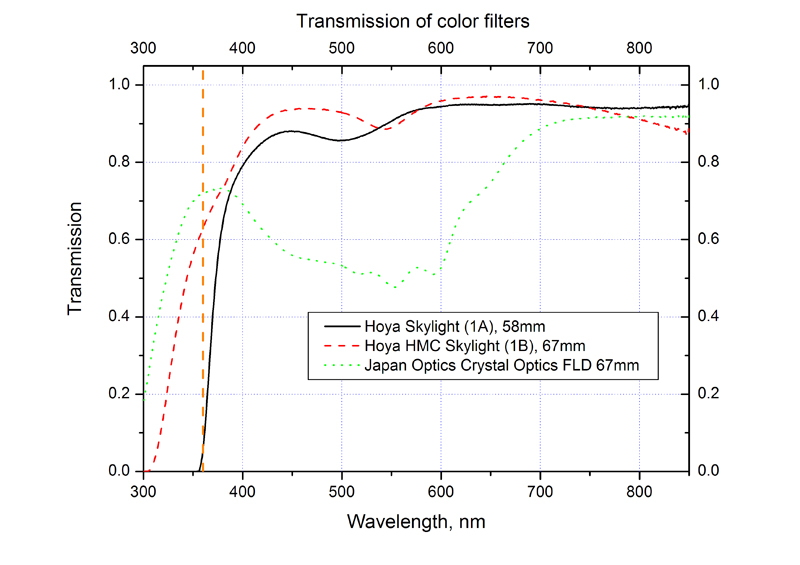

HOYA
Hoya Skylight (1A), 58mm Hoya HMC Skylight (1B), 67mm Japan Optics Japan Optics Crystal Optics FLD, 67mm
Special thanks for the provided filters:
Merchant Greg, Montana State University Malanushenko Anna, Montana State University Mansfield Eric, Georgia Institute of Technology
One can ask whether the spectra shown above are reproducible from filter to filter and from place to place on the filter surface. The graph below shows absorption of the cheapest Hoya UV 72 mm measured in 3 different spots of the filter. The absorption is indistinguishable for photographic purposes. Therefore one might expect that the filters are extremely uniform across their area.
I do not have several copies of the same filter, but do not expect much variations from copy to copy, which is very different from the variability in lenses. This is because the filter is just one plane piece of glass, and there are no issues with element-to-element tolerance. 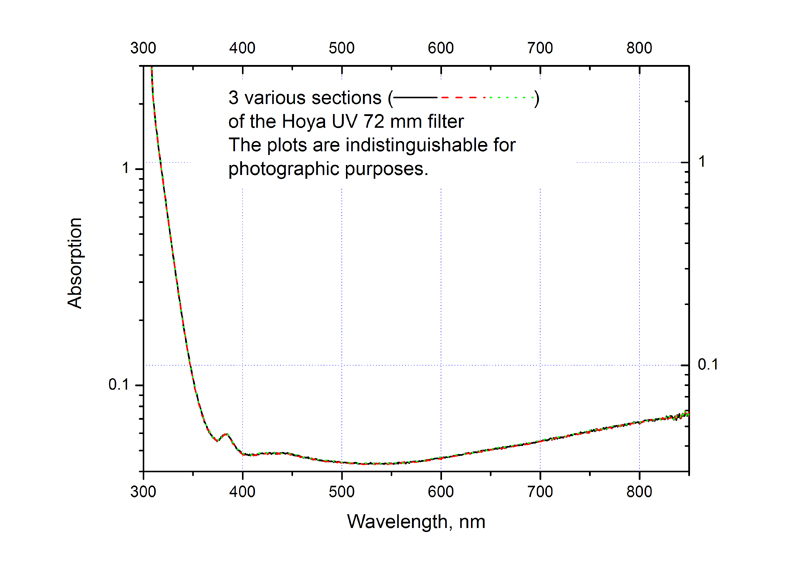
|